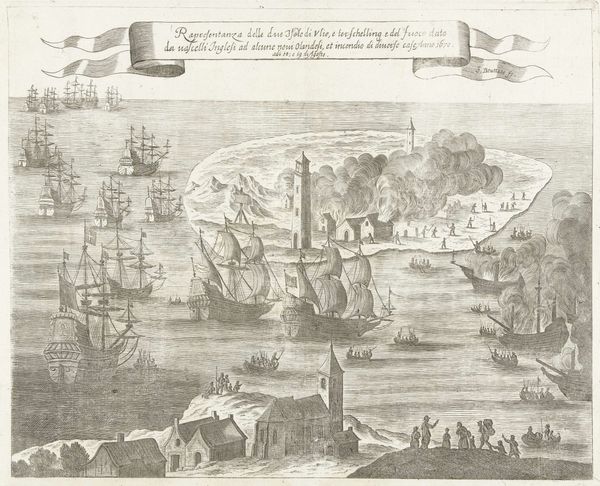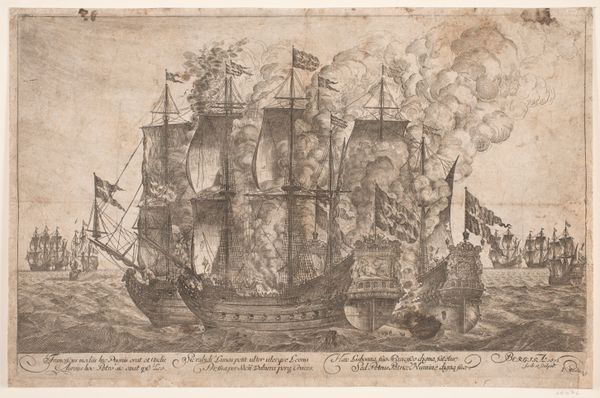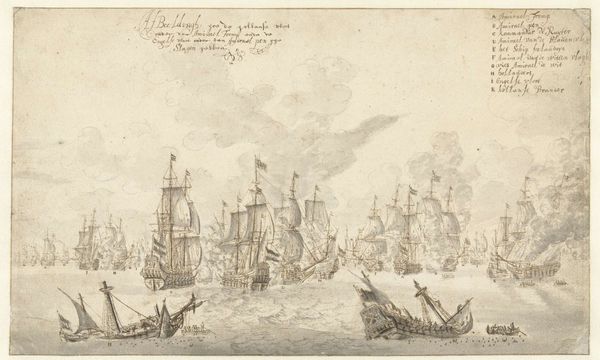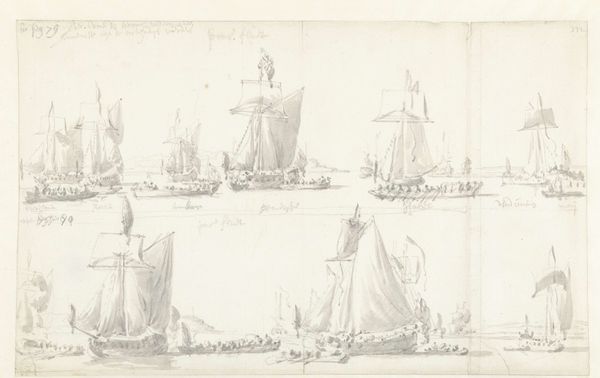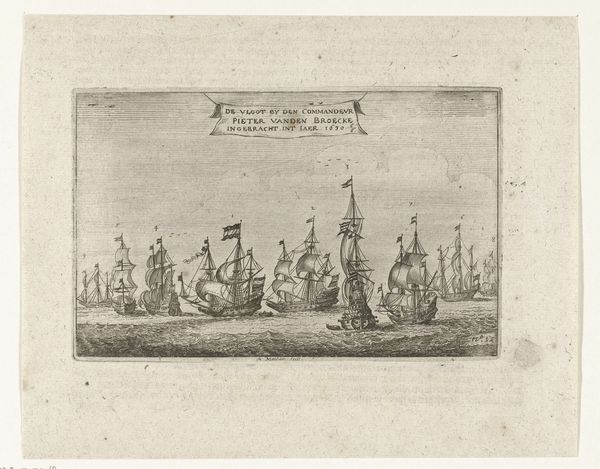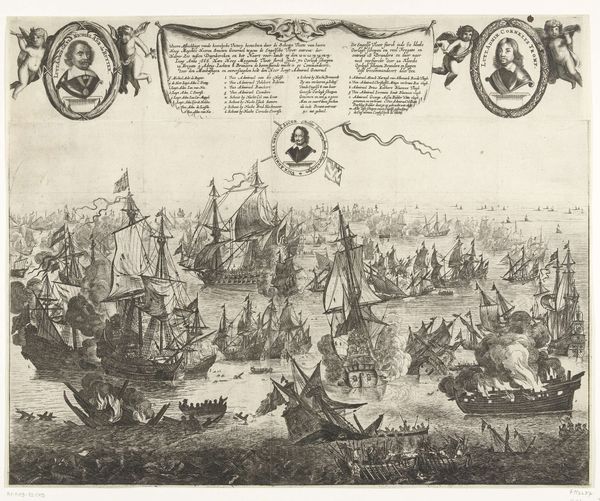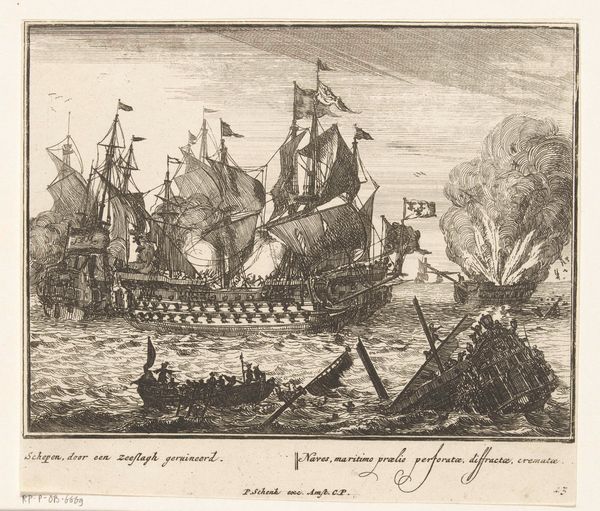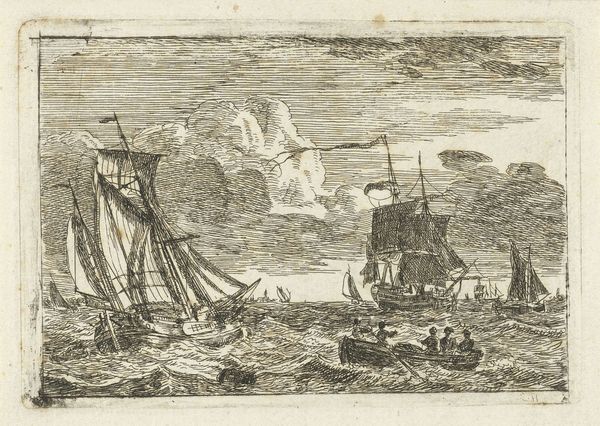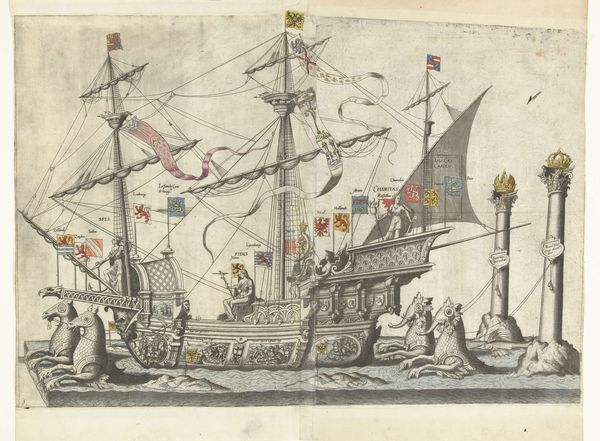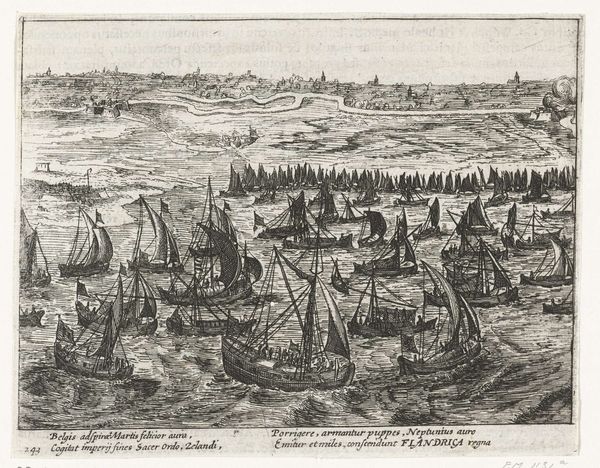
Søslag mellem den engelske og nederlandske flåde, juni 1665 1665
0:00
0:00
print, etching
#
baroque
#
dutch-golden-age
# print
#
etching
#
landscape
#
history-painting
Dimensions: 398 mm (height) x 493 mm (width) (bladmaal)
Curator: Here we have Dirk Stoop’s etching from 1665, “Sea Battle Between the English and Dutch Fleets, June 1665," housed here at the SMK. Editor: It looks…chaotic. A churning mass of ships and smoke, rendered in such meticulous detail. I'm immediately struck by the overwhelming sense of conflict and tension. It is difficult to ascertain the focus with everything that is happening. Curator: Stoop clearly intends to convey the scale of the battle. Looking at the composition, it’s fascinating how the various clusters of ships are constructed through repeated marks of etching that make up each individual vessel. You begin to notice his rendering of light as well, which he creates with lines to denote shadow and highlight. Editor: Indeed. We're seeing a clash not just of naval forces, but also of empires vying for maritime dominance. The labor involved in building, equipping, and manning those ships speaks to complex systems of power, resources, and exploitation of those involved in such grand colonial endeavors. Curator: And in its material form as a print, this image itself becomes a commodity, a collectible record of the battle’s significance circulating through the hands of interested spectators. Etchings were perfect for wide dissemination. It served almost as a newspaper of the time, albeit one glorifying war. Editor: It begs the question: whose perspective are we witnessing? The Dutch, presumably. How does this influence our understanding of the event? We have to consider the bias inherent in any historical depiction and how such a vision may continue to contribute to the way naval power, empire and colonial power is legitimized. It has quite an after-effect to witness now. Curator: Considering the Dutch Golden Age’s fascination with naval power and trade, Stoop's rendering certainly serves as propaganda to a degree. But it’s also about the artistry; his skill in capturing such a dynamic scene with only line and form deserves attention. The technique alone merits careful consideration. Editor: You're right. Analyzing its production reveals a wealth of information about labor practices, access to materials, and even social stratification during that time period. What may have seemed like just an action-packed naval moment tells quite another layered narrative. Curator: Absolutely, and looking closely has changed my initial reading of the work too. Editor: It’s always important to read between the lines—literally and figuratively. Thanks for pointing that out!
Comments
No comments
Be the first to comment and join the conversation on the ultimate creative platform.
